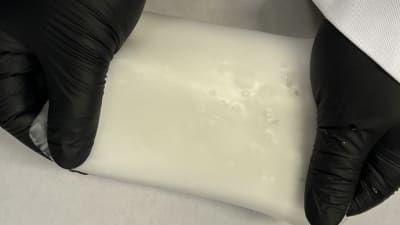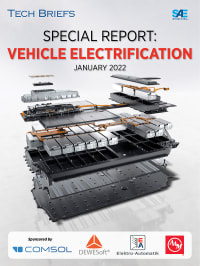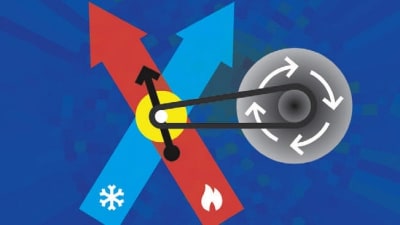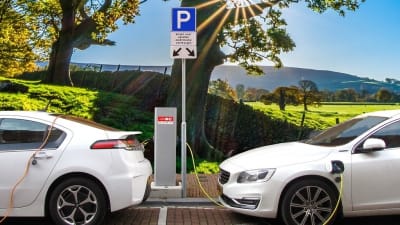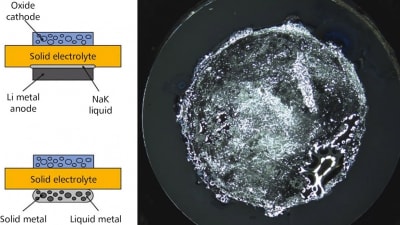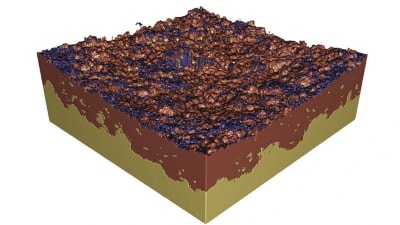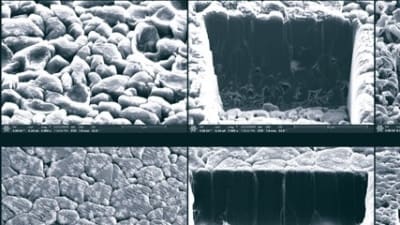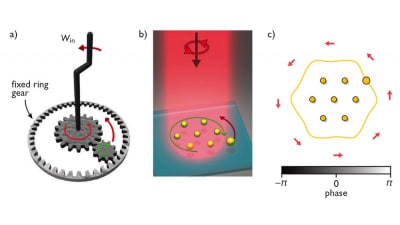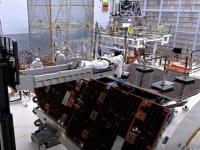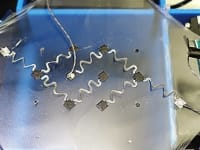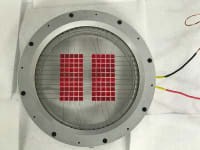Stories
44
6
61
0
210
30
INSIDER: Energy
The aging energy grid is being pushed to the breaking point. Power outages from extreme weather alone cost anywhere from $2 billion to $77 billion per year. And some isolated communities still rely on...
Blog: Materials
An everyday material that we all know well may lead to safer, longer-lasting batteries for the electric vehicle.
Blog: Energy
What's so tough about developing a car? A Tech Briefs reader wants to know the most challenging subsystem of the vehicle to build.
Special Reports: Energy
Vehicle Electrification - January 2022
Innovation is happening at a rapid pace in the e-mobility space. Read this compendium of recent articles from the editors of Automotive Engineering and Truck & Off-Highway Engineering to learn about...Facility Focus: Wearables
Learn about the technologies being developed at NC State, including vehicle armor, a monitoring patch for plants, and origami-inspired materials.
5 Ws: RF & Microwave Electronics
About the size of a grain of sand, the flying microchip (or microflier) does not have a motor or engine.
Briefs: Mechanical & Fluid Systems
The engine is approximately 10 billion times smaller than a car engine.
Question of the Week: Electronics & Computers
Will Our Bodies Power Our Everyday Electronics?
One of the top INSIDER stories of 2021 included a “wearable microgrid” that harvests energy from motion and sweat to power electronics. (Read the 2021 INSIDER story.)
Q&A: Energy
New lithium-ion batteries that can be charged in 10 to 15 minutes at a roadside charging station.
5 Ws: Energy
Fibers sewn into fabrics can turn heat from the Sun into energy that could power textile electronics.
Briefs: Energy
Polymer cores redirect light from any source to solar cells.
Briefs: Materials
The windows reduce the need for air conditioning and simultaneously generate electricity.
Briefs: Automotive
A new anode for aqueous batteries uses seawater as an electrolyte.
Briefs: Manufacturing & Prototyping
This practical technique uses magnetism to transmit electricity wirelessly to recharge electric cars, robots, or drones.
Briefs: Photonics/Optics
The optical-based sensor detects the presence of hydrogen without electronics, making the process much safer.
Articles: Electronics & Computers
NASA-developed fire protection, implantable stimulators, and more.
UpFront: Wearables
NASA's satellite data reveals the pandemic's effect on our atmosphere, and a team of shoebox-sized rover scouts is prepped for the lunar surface.
Briefs: Energy
The approach could advance the potential of high-powered, solid-electrolyte lithium batteries.
Briefs: Test & Measurement
The technology could help improve the reliability and performance of lithium-ion batteries.
INSIDER: Electronics & Computers
A team of materials scientists and chemists has determined the proper stack pressure that lithium metal batteries, or LMBs, need to be subjected to...
INSIDER: Energy
As we trend toward more renewables and distributed energy resources (DERs), the design of the electric distribution system itself imposes physical...
INSIDER: Materials
Safe, cheap, and sustainable technology for energy storage has been developed at the Laboratory of Organic Electronics, Linköping University (LiU). It is based on two major...
Products: Electronics & Computers
Power supply ICs, temperature sensors, DC-DC converters, and more.
Articles: Materials
The e-kit promises to be a low-cost solution in the developing world.
Briefs: Energy
The optically powered machines self-assemble and could be used for nanoscale manipulation of tiny cargo.
Briefs: Semiconductors & ICs
Scientists are working to improve the image resolution of X-ray techniques.
Question of the Week: Energy
Will We Use Solar to Power Our Devices Indoors?
Solar or photovoltaic (PV) cells fixed to roofs convert sunlight into electricity. An October Tech Brief highlighted a spin on this traditional idea of solar.
Blog: Manufacturing & Prototyping
Christopher Borroni-Bird and his team want to make an "e-kit" that provides a boost to wheelbarrows, bikes, and other non-motorized vehicles.
Blog: Energy
Long-haul trucking may be the best candidate for hydrogen power. An industry expert tells us when we can expect more hydrogen fuel cells on the highway.
Top Stories
Blog: Manufacturing & Prototyping
2025 Holiday Gift Guide for Engineers: Tech, Tools, and Gadgets
Blog: Power
Using Street Lamps as EV Chargers
INSIDER: Semiconductors & ICs
Scientists Create Superconducting Semiconductor Material
Blog: Materials
This Paint Can Cool Buildings Without Energy Input
Blog: Software
Quiz: Power
Webcasts
 Upcoming Webinars: AR/AI
Upcoming Webinars: AR/AI
The Real Impact of AR and AI in the Industrial Equipment Industry
 Upcoming Webinars: Motion Control
Upcoming Webinars: Motion Control
Next-Generation Linear and Rotary Stages: When Ultra Precision...
 Podcasts: Manufacturing & Prototyping
Podcasts: Manufacturing & Prototyping
SAE Automotive Engineering Podcast: Additive Manufacturing
 Podcasts: Defense
Podcasts: Defense
A New Approach to Manufacturing Machine Connectivity for the Air Force
 On-Demand Webinars: Manufacturing & Prototyping
On-Demand Webinars: Manufacturing & Prototyping
Streamlining Manufacturing with Integrated Digital Planning and Simulation



